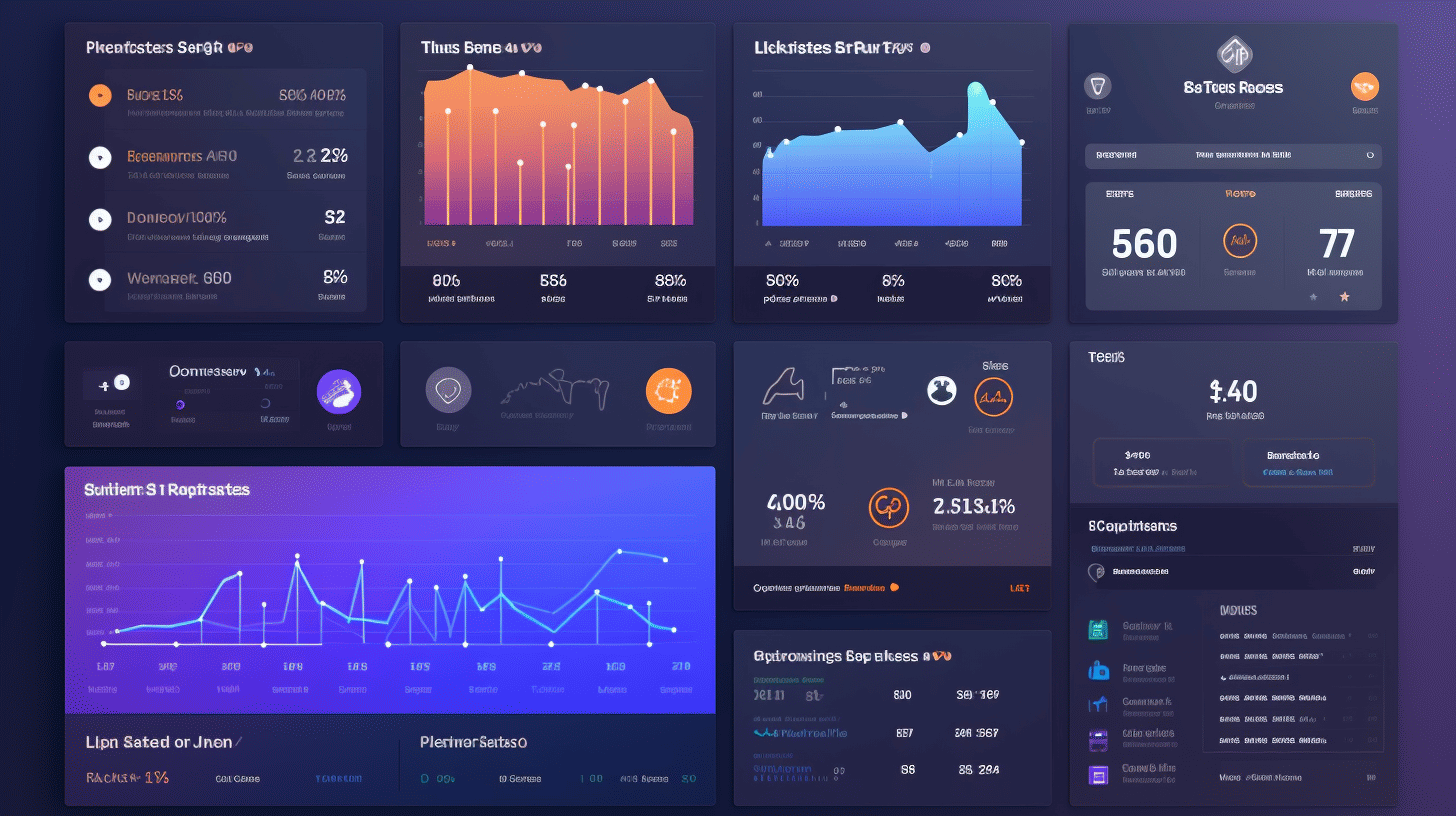在當今的數位環境中,擁有強大的線上影響力對於企業和個人來說都至關重要。提高知名度和吸引自然流量到您網站最有效的方法之一是透過搜尋引擎優化 (SEO)。在網站建置方面,WordPress 是全球數百萬用戶的首選平台。
WordPress 提供了用戶友好的介面和大量的工具和插件,可輕鬆優化您的網站以適應搜尋引擎。在本文中,我們將探討 WordPress SEO 優化如何顯著改善用戶體驗並為您的網站帶來更多流量。
從提高網站速度到針對行動裝置進行最佳化並創建可讀內容,WordPress SEO 優化涵蓋各種旨在增強用戶在您網站上的體驗的策略。
但在深入探討細節之前,讓我們先了解什麼是 SEO,以及為什麼它對 WordPress 網站至關重要。
什麼是WordPress SEO優化?
在廣闊的網路世界中,無數網站都在爭奪關注,出現在搜尋引擎結果的頂部是獲得知名度和吸引訪客的關鍵。這就是搜尋引擎優化(SEO)發揮作用的地方。
了解搜尋引擎優化
SEO 包含一系列策略和技術,旨在提高網站的知名度和來自 Google、Bing 和 Yahoo 等搜尋引擎的自然流量。 WordPress SEO 優化具體是指在使用 WordPress 內容管理系統 (CMS) 建立的網站上實施這些策略。網路上超過 40% 的網站使用 WordPress,了解如何針對 SEO 優化您的 WordPress 網站可以讓您在網路世界中佔據顯著優勢。
SEO 對 WordPress 的重要性
WordPress SEO 優化至關重要,原因如下:
- 提高搜尋引擎排名:透過對您的網站進行 SEO 優化,您可以增加在搜尋引擎結果中排名更高的可能性。這意味著當有人搜尋與您的網站相關的特定關鍵字或短語時,他們更有可能找到並點擊您的網站。
- 增加有機流量:更高的排名會帶來更高的知名度,從而吸引更多的自然流量到您的 WordPress 網站 - 即直接來自搜尋引擎結果而不是透過付費廣告的流量。自然流量很有價值,因為它往往更有針對性,而且更有可能轉化為客戶或讀者。
- 增強使用者體驗:SEO 優化涉及改善 WordPress 網站的各個方面,例如網站速度、行動響應能力和用戶友好導航。透過增強這些元素,您可以為訪客創造更好的使用者體驗,增加他們留在您的網站、進一步探索和將來返回的機會。
- 更好的內容可發現性:SEO優化涉及優化您的網站內容,包括部落格文章、文章和產品頁面,以確保搜尋引擎可以輕鬆發現它們。這使得搜尋相關資訊或解決方案的使用者更有可能找到您的有價值的內容。
- 長期利益:與其他一些行銷策略不同,SEO優化具有持久的效果。一旦您針對 SEO 優化了 WordPress 網站並獲得更高的排名,您就可以在較長時間內繼續獲得收益。這意味著隨著時間的推移,會有更多的可見度、流量和潛在轉換。
因此,無論您擁有個人部落格、電子商務商店還是商業網站,投入時間和精力進行 WordPress SEO 優化都是值得的。您的網站在搜尋引擎結果中的排名越高,您在競爭激烈的線上環境中獲得的曝光率和成功率就越高。
WordPress SEO 如何改善使用者體驗
在當今的數位環境中,使用者體驗 (UX) 對於網站的成功起著至關重要的作用。對於 WordPress 網站,實施有效的 SEO 策略不僅有助於提高搜尋引擎排名,還可以增強整體使用者體驗。透過用戶友好且優化的網站,您可以吸引訪客,鼓勵他們更長時間地訪問網站,並最終推動轉換。讓我們來探索一下 WordPress SEO 改善用戶體驗的一些方法:
網站速度⚡️
“加載緩慢的網站會讓訪客很失望。”
影響使用者體驗的關鍵因素之一是網站速度。用戶希望網站能夠快速加載,如果等待時間過長,他們可能會放棄該頁面並轉到競爭對手的網站。網站速度緩慢不僅會讓用戶感到沮喪,還會對搜尋引擎排名產生負面影響。
透過實施 WordPress SEO 實踐,例如優化圖像、啟用快取、最小化 CSS 和 JavaScript 檔案以及選擇可靠的託管服務提供商,您可以顯著提高網站的載入速度。更快的網站可以快速提供內容並吸引訪客,從而提升用戶體驗。
行動最佳化
“移動設備已經成為訪問互聯網的主要方式。”
在當今以行動為中心的世界裡,網站的行動友善性至關重要。行動優化不再只是一種選擇;在所有裝置上提供無縫的使用者體驗是必要的。隨著越來越多的人透過智慧型手機和平板電腦上網,忽視行動優化可能會導致大量潛在客戶的流失。
WordPress 提供大量適合行動裝置的主題和插件,可輕鬆針對行動裝置優化您的網站。響應式設計、行動友善導航以及行動裝置上的快速載入時間有助於帶來正面的使用者體驗。透過利用 WordPress SEO 技術針對行動裝置優化您的網站,您可以確保訪客無論使用什麼裝置都能享受愉快的瀏覽體驗。
可讀且可存取的內容📖
“用戶欣賞結構良好、資訊豐富且易於訪問的內容。”
您在網站上提供的內容對於吸引用戶並讓他們留在您的網站上起著至關重要的作用。無論您的網站在視覺上多麼吸引人,如果內容難以閱讀、結構不良或無法訪問,用戶很可能會離開並在其他地方尋找資訊。
WordPress 提供了一系列 SEO 友善的功能和插件,可以輕鬆創建結構良好、可讀且可存取的內容。透過使用適當的標題、以項目符號或編號清單組織內容、合併相關圖像和替代文字以及優化文字的可讀性,您可以增強使用者體驗並鼓勵訪客在您的網站上停留更長時間。
總之,實施有效的 WordPress SEO 策略會直接影響使用者體驗。透過專注於網站速度、行動優化和創建可訪問的內容,您可以保持訪客的參與度、提高搜尋引擎排名,並最終推動業務成功。因此,如果您想創造積極的用戶體驗並在線上世界中獲得競爭優勢,請務必優先考慮 WordPress SEO。
WordPress SEO 最佳實踐
在針對搜尋引擎優化您的 WordPress 網站時,您應該遵循一些最佳做法來提高您的排名並增加自然流量。從進行關鍵字研究到優化元描述,您可以實施各種策略來最大化您的 SEO 效果。在本文中,我們將探討一些最有效的 WordPress SEO 最佳實踐,以及如何利用它們來提高您的網站在搜尋引擎結果頁面 (SERP) 中的可見度。
關鍵字研究與使用
SEO 的基本面向之一是選擇正確的關鍵字作為內容的目標。透過進行徹底的關鍵字研究,您可以確定目標受眾正在搜尋的術語和短語,從而可以創建直接滿足他們需求的內容。以下是有效研究和使用關鍵字的一些關鍵提示:
- 確定相關關鍵字: 使用 Google 關鍵字規劃師、Ahrefs 或 SEMrush 等關鍵字研究工具來發現與您的業務或領域相關的高流量、低競爭的關鍵字。
- 關注長尾關鍵字: 長尾關鍵字是較長、更具體的短語,通常搜尋量較低但轉換率較高。透過定位這些關鍵字,您可以吸引更多合格的流量到您的網站。
- 自然整合關鍵字: 一旦確定了目標關鍵字,就以自然、有機的方式將其合併到您的內容中。避免關鍵字堆砌,因為這可能會導致糟糕的用戶體驗並可能損害您的搜尋排名。
元描述和標題標籤
元描述和標題標籤是優化您網站頁面和部落格文章的關鍵元素。它們提供您內容的簡潔摘要,幫助搜尋引擎了解您的網頁內容。以下是優化元描述和標題標籤的方法:
- 製作引人注目的標題: 建立描述性、獨特且引人注目的標題,準確反映您網頁的內容。自然地包含您的目標關鍵字,但避免關鍵字堆砌。
- 撰寫引人入勝的元描述: 製作引人注目的元描述,吸引用戶點擊您的搜尋清單。使用行動導向的語言,包含相關關鍵字,並將描述保持在 160 個字元以下。
影像優化
圖像在增強網站的視覺吸引力方面發揮著至關重要的作用,但它們也會影響您的 SEO 工作。透過優化圖像,您可以改善網站的載入時間並增加在圖像搜尋結果中排名的機會。考慮以下影像優化技術:
- 選擇正確的文件格式: 對照片使用 JPEG,對具有透明度的圖形和影像使用 PNG。這有助於保持圖像品質和檔案大小之間的平衡。
- 壓縮影像: 透過減小影像檔案大小來優化影像,同時不影響其品質。您可以使用圖片壓縮工具(如 TinyPNG)或外掛程式(如 ShortPixel)來自動執行此程序。
- 新增替代文字: 為您的圖片添加描述性替代文本,因為如果沒有此文本,搜尋引擎就無法解釋它們。在適當的地方使用相關的關鍵字,但一定要提供準確而有意義的描述。
使用 Yoast SEO 和 Rank Math 等插件
WordPress 提供了各種各樣的插件,可以幫助簡化您的 SEO 工作。 WordPress SEO 最受歡迎的兩個外掛程式是 Yoast SEO 和 Rank Math。這些外掛程式提供了一套全面的功能來優化您的網站以適應搜尋引擎。使用這些插件有以下好處:
- 輕鬆的頁面優化: Yoast SEO 和 Rank Math 提供直覺的介面,引導您完成針對 SEO 優化內容的過程。他們為改進您的元標籤、關鍵字和整體內容結構提供建議和推薦。
- XML 網站地圖產生: 這兩個外掛程式都會自動產生 XML 網站地圖,讓搜尋引擎更容易抓取和索引您的網站。
- 社群媒體整合: Yoast SEO 和 Rank Math 可讓您優化社交媒體分享設置,確保您的內容在 Facebook 和 Twitter 等平台上分享時看起來具有吸引力。
透過結合這些 WordPress SEO 最佳實踐,您可以提高網站在搜尋引擎結果中的可見度並吸引更多自然流量。請記住定期監控您的 SEO 性能並根據分析數據進行調整以不斷提高您的排名。
改善特定區域的 WordPress SEO
有時,瀏覽廣闊的 WordPress SEO 世界可能會感到不知所措。由於有太多領域需要優化,因此知道將精力集中在哪裡可能很困難。在本文中,我們將探討可以顯著改善 WordPress 網站的 SEO 的三個特定領域:導航和網站架構、核心網路生命力和可讀性。透過實施這些策略,您將能夠順利提升網站在搜尋引擎排名中的知名度。
導航和網站結構
說到 SEO,結構良好且直覺的網站導航至關重要。它不僅提供無縫的用戶體驗,而且還使搜尋引擎能夠更有效地抓取和索引您的網站。以下是優化網站導航和結構的一些技巧:
- 簡潔明了的菜單: 確保主選單易於理解和導航。對選單項目使用清晰簡潔的標籤,避免使用行話或複雜的術語。讓訪客輕鬆找到他們正在尋找的資訊。
- 邏輯層次: 將您的網站內容組織成邏輯類別和子類別。這種層次結構不僅可以幫助使用者找到所需內容,還可以為搜尋引擎提供清晰的網站結構。
- 內部連結: 內部連結對於改善您網站的 SEO 起著至關重要的作用。它們可以幫助搜尋引擎更有效地發現和瀏覽您的內容。此外,內部連結可以幫助在您的網站上分配權威性和相關性。確保這些內部連結包含相關且描述性的錨文本。
透過優化網站的導航和結構,您可以創建用戶友好的體驗,同時幫助搜尋引擎更好地理解您的內容。
改善核心網路生命力
自 2021 年 5 月起,Google 已開始將核心網路生命力指標作為排名因素。核心網路生命力衡量以使用者為中心的效能指標,重點在於頁面載入速度、互動性和視覺穩定性。您可以透過以下一些方法增強 WordPress 網站的核心網路生命力:
- 優化頁面載入速度: 用戶期望網站快速加載。壓縮圖像、利用瀏覽器快取並縮小 CSS 和 JavaScript 檔案以提高頁面載入速度。
- 減少首次輸入延遲: 首次輸入延遲 (FID) 衡量使用者首次與您的網站互動所需的時間。盡量減少阻塞 JavaScript 並優化您的程式碼以減少 FID。
- 消除累積佈局偏移: 當網頁上的元素意外移動時,就會發生累積佈局偏移 (CLS),導致不良的使用者體驗。避免動態插入內容或未保留足夠空間和適當尺寸的影像以防止佈局偏移。
透過優先考慮核心網路生命力,您不僅可以改善網站的 SEO,還可以增強整體使用者體驗,從而提高參與度和轉換率。
增強可讀性
可讀的內容不僅對用戶友好,而且對搜尋引擎也友好。以下是增強 WordPress 網站可讀性時需要考慮的一些關鍵要素:
- 使用標題和副標題: 使用標題和副標題劃分您的內容,以提高可讀性並使用戶更輕鬆地瀏覽您的網頁。使用適當的標題標籤(H1、H2 等)來指示內容的層次結構。
- 簡潔地寫: 使用清晰簡潔的語言來傳達您的訊息。將複雜的訊息分解成易於理解的部分,並使用簡短的段落來提高可讀性。
- 包括相關關鍵字: 雖然在內容中包含相關關鍵字至關重要,但請記住以自然的方式進行,並以提高可讀性的方式進行。過度使用關鍵字會損害使用者體驗和您的 SEO 工作。
透過實施這些可讀性策略,您將創建既內容豐富又有趣的內容。這不僅可以保持用戶的參與度,還可以向搜尋引擎表明您的網站提供了有價值且權威的資訊。
針對這些特定區域優化您的 WordPress 網站無疑會對您的 SEO 工作產生積極影響。透過專注於導航和網站結構、改進核心網路要素並增強可讀性,您將創建一個用戶友好且搜尋引擎友好的網站,在競爭激烈的線上環境中脫穎而出。
透過 WordPress SEO 優化提高排名
🔍 您是否希望提高您的網站在搜尋引擎上的知名度?只要考慮 WordPress SEO 優化即可。 WordPress 具有用戶友好的介面和強大的功能,是提高您網站搜尋引擎排名的完美平台。在本文中,我們將探討一些關鍵策略和技巧,以幫助您在搜尋結果中獲得更高的排名。
為什麼 SEO 優化對 WordPress 網站很重要
✅ 超過 4.55 億個網站由 WordPress 提供支持,使其成為最受歡迎的內容管理系統之一。在如此激烈的競爭中,針對搜尋引擎優化您的 WordPress 網站至關重要。原因如下:
- 增加有機流量: 在搜尋結果中排名更高意味著會有更多人點擊您的網站,從而增加自然流量。這可以帶來更多的轉換和銷售。
- 改進的使用者體驗: SEO 優化包括提高您網站的載入速度、行動裝置響應能力以及整體用戶體驗。優化良好的網站可確保訪客獲得正面的體驗,從而提高參與度並延長訪問時間。
- 信譽與信任: 出現在搜尋結果的第一頁可以與受眾建立信譽和信任。用戶更有可能信任在搜尋引擎中排名較高的網站。
- 長期利益: SEO優化是一個持續的過程,可以產生長期的效果。投入時間和精力來優化您的 WordPress 網站可以帶來持續的自然流量和提高排名。
WordPress SEO優化的關鍵策略
現在您了解了為什麼 SEO 優化對您的 WordPress 網站至關重要,讓我們探索一些幫助您提高排名的關鍵策略。以下是一些可幫助您入門的技巧:
- 關鍵字研究: 進行徹底的關鍵字研究來確定目標受眾正在使用的搜尋字詞。使用 Google Keyword Planner 或 SEMrush 等工具來尋找搜尋量高、競爭低的相關關鍵字。
- 優化內容: 創造自然融入目標關鍵字的高品質內容。確保您的內容有價值、資訊豐富、引人入勝,以便讓訪客在您的網站上停留更長時間。
- 元標籤和描述: 為您 WordPress 網站上的每個頁面和貼文自訂元標記和描述。這些元素提供了您的內容的簡潔摘要,優化它們可以提高點擊率。
- 移動優化: 隨著行動裝置的使用日益增多,針對行動用戶優化您的 WordPress 網站至關重要。確保您的網站響應迅速且適合行動設備,以提供無縫的瀏覽體驗。
- 網站速度: 載入時間緩慢會對使用者體驗和搜尋引擎排名產生不利影響。透過使用快取外掛程式、減小圖片大小和優化程式碼來優化 WordPress 網站的速度。
立即開始使用 WordPress SEO 優化!
🚀 透過 WordPress SEO 優化,您可以提高網站的知名度,吸引更多的自然流量,並提高您的搜尋引擎排名。透過實施關鍵策略,例如進行關鍵字研究、創建優化內容以及提高網站速度和行動裝置響應能力,您將能夠在搜尋結果中獲得更高的排名。立即開始優化您的 WordPress 網站並觀察您的線上表現飆升!
結論
總之,實施 WordPress SEO 優化是改善網站使用者體驗的關鍵步驟。透過針對搜尋引擎優化您的網站,您不僅可以增加在搜尋結果中排名更高的機會,還可以增強訪客的整體體驗。
透過專注於網站速度、行動優化以及創建可讀且可訪問的內容,您可以創建無縫的用戶體驗,讓訪客保持參與並鼓勵他們在您的網站上停留更長時間。此外,遵循最佳實踐,例如進行關鍵字研究、優化元描述以及使用 Yoast SEO 和 Rank Math 等外掛程式可以進一步提高您網站的可見性和有效性。
請記住,優化良好的網站更有可能吸引自然流量、產生潛在客戶並最終提高轉換率。在建立和維護您的 WordPress 網站時,不要忽視 SEO 的重要性。
如果您正在尋找可以簡化基礎架構並提供專家支援的高級託管 WordPress 雲端託管平台,請考慮 Managed-WP™。使用 Managed-WP,您可以專注於創建精彩的內容,而將託管的技術方面交給專家。詳細了解 Managed-WP 如何增強您的 WordPress 體驗,請造訪 管理-wp.com.
擁抱 WordPress SEO 優化的強大功能,將您的使用者體驗提升到新的高度。立即開始實施這些策略,並觀察您的網站知名度、流量和參與度的成長。您的用戶會感謝您,搜尋引擎也會獎勵您。
常見問題解答
- 什麼是WordPress SEO優化?
WordPress SEO 優化是指透過優化內容、提高網站速度、增強行動響應能力和實施 SEO 最佳實踐等各種技術來改善 WordPress 網站的搜尋引擎可見度、效能和用戶體驗的過程。
- 為什麼使用者體驗對SEO優化很重要?
用戶體驗在 SEO 優化中起著至關重要的作用,因為搜尋引擎優先考慮提供積極且引人入勝的用戶體驗的網站。透過改善使用者體驗,例如響應式設計、快速的頁面載入時間和便利的導航,您可以增加在搜尋引擎結果中排名更高的機會。
- 如何優化我的 WordPress 網站以獲得更好的使用者體驗?
為了優化您的 WordPress 網站以獲得更好的用戶體驗,您可以先使用適合行動裝置的主題,優化圖片和多媒體檔案以加快載入速度,透過快取和縮小來提高網站速度,確保透過清晰的選單和麵包屑輕鬆導航,並為用戶提供有價值且相關的內容。
- 有沒有專門針對WordPress SEO優化的外掛?
是的,有多個外掛程式可用於 WordPress SEO 優化,例如 Yoast SEO、Rank Math、All in One SEO Pack、用於快取的 WP Rocket、用於圖像優化的 WP Smush 和用於效能改進的 WP Super Cache。這些外掛程式可以幫助您實現各種優化技術。
- 單靠SEO優化就能提升使用者體驗嗎?
SEO優化雖然有助於提升使用者體驗,但它並不是唯一的因素。使用者體驗涵蓋設計、可用性、可訪問性和內容品質等多個方面。 SEO 優化與這些元素結合,可以創造出整體的、增強的使用者體驗。



















